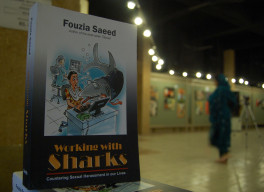
On the concluding day of a two-day conference on the role of collective struggle in defining the social order, speakers, on Tuesday, discussed the trajectories of religious and political movements in the country.
According to Fayyaz Baqir, one of the speakers, the contemporary history of civil society movements in Pakistan can be traced to the defeat in the War of Independence in the subcontinent in 1857, said a press release.
“Student movements as part of the civil society’s struggle to achieve freedom and democratic ideals began before the creation of Pakistan.” Since then, civil society movements have been dominated by three major trends, radical resistance of revivalists against encroachment of social space by the state, revolutionary challenge to the legitimacy of the state and market economy by left-wing progressives and reclaiming the space encroached upon by the state by secular reformists through constitutional means.

Amir Rana, a security and political analyst from the Pakistan Institute for Peace Studies, discussed the role of political Islam and emerging trends. Speaking about the reality of religious discourse in Pakistan today, he highlighted the two main components of religious discourse, Islamisation and religious socialisation, emphasising how religious discourse is encroaching upon civil society.
He identified key elements that form a religiously cultivated civil society, which include political, missionary, sectarian and militant activities. He stated that political parties had adopted a religious perspective to promote their agendas and religious movements had expanded to all classes in Pakistan but developed different characteristics.
Rana concluded his presentation with the identification of emerging trends, the first of which is the increasing coherence among violent and non-violent radical groups of Deobandi sect and the emergence of a new far right. He also mentioned the increasing sense of alienation among Barelvi and Shiite sects.

A social scientist, Dr Rubina Saigol outlined the trajectory of the women’s movement and elaborated on how the movement transitioned from one of collusion and mutual accommodation with the state, beginning with Ayub Khan’s rule, to a confrontational relationship during Gen. Ziaul Haq’s dictatorship.
This drastic turnaround in the relationship occurred at a time when the former president passed a spate of discriminatory laws against women, including the Hudood Ordinance, she stated. “The Women’s Action Forum adopted various forms of resistance from marches and demonstrations to theatre and dance.”
Dr Saigol argued that the women’s movement seemed to lose ground during the decade of democracy and later collaborated with the military regime when it took over in 1999.
Published in The Express Tribune, February 12th, 2014.









































COMMENTS
Comments are moderated and generally will be posted if they are on-topic and not abusive.
For more information, please see our Comments FAQ